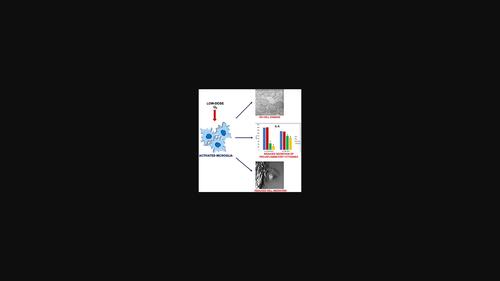当前位置:
X-MOL 学术
›
Microsc. Res. Tech.
›
论文详情
Our official English website, www.x-mol.net, welcomes your
feedback! (Note: you will need to create a separate account there.)
Ozone at low concentration modulates microglial activity in vitro: A multimodal microscopy and biomolecular study
Microscopy Research and Technique ( IF 2.0 ) Pub Date : 2022-09-21 , DOI: 10.1002/jemt.24233 Maria Assunta Lacavalla 1 , Chiara Rita Inguscio 1 , Barbara Cisterna 1 , Paolo Bernardi 1 , Manuela Costanzo 1 , Mirco Galiè 1 , Ilaria Scambi 1 , Osvaldo Angelini 2 , Gabriele Tabaracci 2 , Manuela Malatesta 1
Microscopy Research and Technique ( IF 2.0 ) Pub Date : 2022-09-21 , DOI: 10.1002/jemt.24233 Maria Assunta Lacavalla 1 , Chiara Rita Inguscio 1 , Barbara Cisterna 1 , Paolo Bernardi 1 , Manuela Costanzo 1 , Mirco Galiè 1 , Ilaria Scambi 1 , Osvaldo Angelini 2 , Gabriele Tabaracci 2 , Manuela Malatesta 1
Affiliation

|
Oxygen-ozone (O2-O3) therapy is an adjuvant/complementary treatment based on the activation of antioxidant and cytoprotective pathways driven by the nuclear factor erythroid 2-related factor 2 (Nrf2). Many drugs, including dimethyl fumarate (DMF), that are used to reduce inflammation in oxidative-stress-related neurodegenerative diseases, act through the Nrf2-pathway. The scope of the present investigation was to get a deeper insight into the mechanisms responsible for the beneficial result of O2-O3 treatment in some neurodegenerative diseases. To do this, we used an integrated approach of multimodal microscopy (bright-field and fluorescence microscopy, transmission and scanning electron microscopy) and biomolecular techniques to investigate the effects of the low O3 concentrations currently used in clinical practice in lipopolysaccharide (LPS)-activated microglial cells human microglial clone 3 (HMC3) and in DMF-treated LPS-activated (LPS + DMF) HMC3 cells. The results at light and electron microscopy showed that LPS-activation induced morphological modifications of HMC3 cells from elongated/branched to larger roundish shape, cytoplasmic accumulation of lipid droplets, decreased electron density of the cytoplasm and mitochondria, decreased amount of Nrf2 and increased migration rate, while biomolecular data demonstrated that Heme oxygenase 1 gene expression and the secretion of the pro-inflammatory cytokines, Interleukin-6, and tumor necrosis factor-α augmented. O3 treatment did not affect cell viability, proliferation, and morphological features of both LPS-activated and LPS + DMF cells, whereas the cell motility and the secretion of pro-inflammatory cytokines were significantly decreased. This evidence suggests that modulation of microglia activity may contribute to the beneficial effects of the O2-O3 therapy in patients with neurodegenerative disorders characterized by chronic inflammation.
中文翻译:

低浓度臭氧在体外调节小胶质细胞活性:多模式显微镜和生物分子研究
氧气-臭氧 (O 2 -O 3 ) 疗法是一种辅助/补充疗法,其基础是激活由核因子红细胞 2 相关因子 2 (Nrf2) 驱动的抗氧化和细胞保护途径。许多药物,包括富马酸二甲酯 (DMF),用于减少氧化应激相关神经退行性疾病的炎症,都是通过 Nrf2 通路发挥作用的。本调查的范围是深入了解负责 O 2 -O 3有益结果的机制治疗一些神经退行性疾病。为此,我们使用了多模式显微镜(明场和荧光显微镜、透射和扫描电子显微镜)和生物分子技术的综合方法来研究低 O 3的影响目前在临床实践中用于脂多糖 (LPS) 激活的小胶质细胞人类小胶质细胞克隆 3 (HMC3) 和 DMF 处理的 LPS 激活 (LPS + DMF) HMC3 细胞的浓度。光镜和电子显微镜的结果表明,LPS 激活诱导 HMC3 细胞的形态学改变,从拉长/分枝到更大的圆形,脂滴在细胞质中积累,细胞质和线粒体的电子密度降低,Nrf2 的量减少和迁移率增加,而生物分子数据表明,血红素加氧酶 1 基因表达和促炎细胞因子、白细胞介素 6 和肿瘤坏死因子-α的分泌增加。欧3处理不影响 LPS 激活和 LPS + DMF 细胞的细胞活力、增殖和形态学特征,而细胞运动和促炎细胞因子的分泌显着降低。该证据表明,小胶质细胞活性的调节可能有助于 O 2 -O 3疗法对患有以慢性炎症为特征的神经退行性疾病患者的有益效果。
更新日期:2022-09-21
中文翻译:

低浓度臭氧在体外调节小胶质细胞活性:多模式显微镜和生物分子研究
氧气-臭氧 (O 2 -O 3 ) 疗法是一种辅助/补充疗法,其基础是激活由核因子红细胞 2 相关因子 2 (Nrf2) 驱动的抗氧化和细胞保护途径。许多药物,包括富马酸二甲酯 (DMF),用于减少氧化应激相关神经退行性疾病的炎症,都是通过 Nrf2 通路发挥作用的。本调查的范围是深入了解负责 O 2 -O 3有益结果的机制治疗一些神经退行性疾病。为此,我们使用了多模式显微镜(明场和荧光显微镜、透射和扫描电子显微镜)和生物分子技术的综合方法来研究低 O 3的影响目前在临床实践中用于脂多糖 (LPS) 激活的小胶质细胞人类小胶质细胞克隆 3 (HMC3) 和 DMF 处理的 LPS 激活 (LPS + DMF) HMC3 细胞的浓度。光镜和电子显微镜的结果表明,LPS 激活诱导 HMC3 细胞的形态学改变,从拉长/分枝到更大的圆形,脂滴在细胞质中积累,细胞质和线粒体的电子密度降低,Nrf2 的量减少和迁移率增加,而生物分子数据表明,血红素加氧酶 1 基因表达和促炎细胞因子、白细胞介素 6 和肿瘤坏死因子-α的分泌增加。欧3处理不影响 LPS 激活和 LPS + DMF 细胞的细胞活力、增殖和形态学特征,而细胞运动和促炎细胞因子的分泌显着降低。该证据表明,小胶质细胞活性的调节可能有助于 O 2 -O 3疗法对患有以慢性炎症为特征的神经退行性疾病患者的有益效果。











































 京公网安备 11010802027423号
京公网安备 11010802027423号